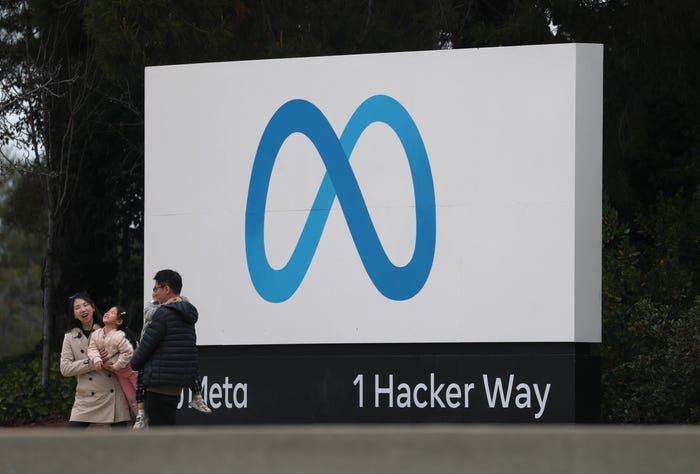How to Transform IIoT from a Buzzword to a Competitive AdvantageHow to Transform IIoT from a Buzzword to a Competitive Advantage
Most manufacturing professionals now believe in the promise of the Industrial Internet but don’t know how to unlock its potential.
September 8, 2016

Up until recently, the promises of the Industrial Internet seemed too good to be true for most manufacturers. Now, most are convinced of its promise, according to recent surveys from LNS Research, McKinsey, and IndustryWeek. But tapping into the potential of the Industrial Internet will require a radically new approach to managing their business, which many manufacturers are not ready to make.
There has been a pronounced shift from companies asking: “What is the IIoT?” to “how can I benefit from IIoT?” said Matthew Littlefield, president and principal analyst at LNS Research in a recent webinar. But for most industrial companies, significant work remains in figuring out how to transform the IIoT from a catchphrase to a competitive advantage. LNS offers advice on how to do just that.
Setting Digital Transformation Initiatives Free
A central part of the problem, IoT’s promise to lead to the next Industrial Revolution gets undercut when manufacturers focus merely on incremental improvements. They’re fixated on concepts such as Six Sigma and Kaizen, which tend to focus on incremental gains year over year.
The bigger picture fades. “A lot of IoT projects [should be] about transformative gains—not 1% but 10% or rethinking the entire business model,” Littlefield says.
Two out of five respondents in the LNS survey cited process improvements as the central goal for their IIoT initiatives.
The tension between quality management and disruptive innovation has a long history. As Dartmouth professor Vijay Govindarajan wrote a decade ago: “The more you hardwire a company on total quality management, [the more] it is going to hurt breakthrough innovation… The mindset that is needed, the capabilities that are needed, the metrics that are needed, the whole culture that is needed for discontinuous innovation, are fundamentally different.”
Moreover, manufacturers’ digital transformation initiatives typically don’t extend throughout all levels and departments of the organization, says Littlefield. But digital transformation should be viewed as a set of parallel initiatives that drive innovation throughout an entire organization and the surrounding ecosystem, he argues.
The Right Culture Drives the Right Questions
The cultural hurdle trips up many manufacturers’ IIoT initiatives.
Getting over this obstacle often means hiring new talent. Data scientists, for instance, play a critical role in launching successful IIoT initiatives. They also have a markedly different perspective than the typical engineer. “Engineers are trained to use analytical tools where we define variables, relationships between different types of variables, and pull information from that model,” Littlefield says. A traditional engineering-based approach to predictive analytics is valuable but limiting and focuses on many rearward-looking questions such as, “What happened? Why did it happen?”
Conversely, data scientists armed with machine learning tools answer entirely different kinds of questions. “They don’t begin with a model or assumption of how variables relate to each other,” Littlefield says. “Data scientists just look at the data and allow patterns and relationships to emerge. They assume dirty data and assume they don’t know everything.”
Machine-learning sounds foreign to most industrial companies, but they better get familiar with it quickly. With machine-learning, companies can answer questions they didn’t even think to ask.
“If you put some Big Data in there, you are asking the old question but you may have a new answer,” Littlefield says. “If you use the old data but bring in machine learning, you are going to figure out how to ask new questions. The holy grail is when you combine big data with machine learning analytics. You are going to get new answers to new questions.”
Few manufacturers reap the benefits of machine learning today. “I don’t think many industrial companies have really grasped the full benefits of what we can accomplish with big data and machine learning,” Littlefield says.
Being Realistic about IIoT Initiatives
Nevertheless, manufacturers suffer from false bravado. Both McKinsey and LNS agree many manufacturers are overconfident in their IIoT-related plans.
About seven in ten manufacturers in the United States and Germany report being confident in their Industrial Internet initiatives, commented McKinsey. But only 30 percent of technology suppliers and 16 percent of manufacturers have concrete strategies for those initiatives, which McKinsey describes using the German-coined phrase “Industry 4.0,” shorthand for the Fourth Industrial Revolution.
Another sign of stalled IIoT investment, IIoT initiatives amount to only 14 percent of the R&D budget of companies in the United States and Germany. “Companies that have made at least good/substantial progress with Industry 4.0 have spent, on average, 18 percent of their R&D budget on Industry 4.0 projects, while those with no or limited progress are spending less than 8 percent,” McKinsey notes in its recent report, “Industry 4.0 after the Initial Hype.”
LNS sees a similar gap with manufacturers assessing their expertise with analytics. About 40% think they have all the analytics expertise they need. “This may be because many companies have a limited scope and definition of analytics,” Littlefield says. “A lot of industrial companies are over-assessing their own capabilities in terms of how they can use big data and machine learning technologies. […] But adoption of Big Data predictive analytics still woefully low.”
Avoiding the IIoT Catch-22
While most manufacturers are arguably overconfident when it comes to data analysis, many industry professionals admit that it is a struggle to get Industrial Internet projects off the ground. Nearly one out of three industry professionals say their company has trouble funding IIoT technology, says LNS Research. Meanwhile, 30% struggle to build a business case for the technology while 26% still have trouble understanding how IIoT applies to their business.
Littlefield posits that IIoT’s marketing message confuses industry professionals, leading to stalled IIoT projects within their companies. While some companies take a faith-based approach to investment in IIoT, most risk-adverse manufacturers shun this type of strategy.
“We don’t know what we don’t know and we are stuck in a Catch-22 in a lot of cases,” Littlefield says. “The whole purpose of big data analytics and machine learning is to answer questions we didn’t even know to ask and provide insights into unintended consequences. You need to implement the Big Data analytics to know what those benefits are going to be—those things you don’t know. But until you have the Big Data analytics implemented, you can’t really [realize] those benefits.”
About the Author
You May Also Like




